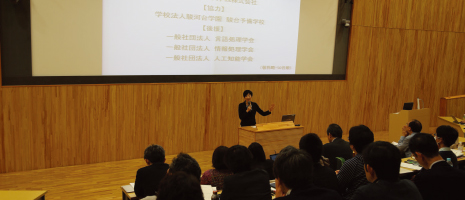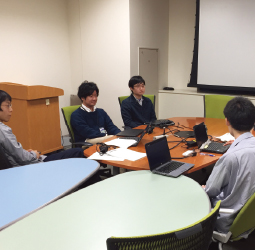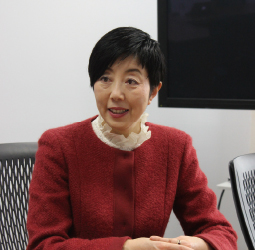Home > Highlighting JAPAN >Highlighting Japan February 2016>Driving the Robotics Age
Highlighting JAPAN


Test Subject
“Can a robot get into the University of Tokyo?” That’s the question the team led by National Institute of Informatics seeks to answer with their similarly-titled project as they prepare the artificial intelligence robot To-Robo-kun to tackle the entrance exam at Tokyo University, designed to be the most difficult entrance exam in Japan. We spoke with project director Noriko Arai about the significance and goals of the project.
The National Institute of Informatics (NII) is leading a project that began in 2011 to see if a robot could actually enter Japan’s top university. The University of Tokyo’s entrance exam is Japan’s most difficult, and the school is consistently ranked among the world’s top one hundred universities. Now five years in, the project is setting 2021 as its target date for having an artificial intelligence (AI) robot called To-Robo-kun pass the test at Todai, as the university is informally known.
Naturally, simply passing the test is not the project’s ultimate goal. Project director Dr. Noriko Arai, a professor in the Information and Society Research Division at NII, spoke about the project’s significance and goals.
“The real aim of this project is to use To-Robo-kun to demonstrate in an accurate fashion to society just what artificial intelligence can and cannot do, and suggest to what extent an AI can take on white-collar work,” Arai states. “We focused on university entrance exams because we feel they are representative of the intellectual labor that Japanese white-collar workers engage in. The actual quantity of data used in the entrance exams is quite small, but compared to big data—with its vast, unsorted quantities of information online—it is exceptionally ‘clean.’ In other words, it has very precise parameters. By exploring how well an AI can learn the test content, we may be able to differentiate ourselves from AI research in other countries, such as in the U.S., which focuses on big data.”
What benefits will the average person see from this experiment’s progress? One potential answer is found in To-Robo-kun’s strongest subject, world history.
“On the latest mock test, the robot scored a 76, 30 points over the average score,” Arai relates. “One of the key reasons is that we fed the AI several thousand examples related to the commonsense knowledge that the test presumes humans know, such as that humans cannot facilitate events after death, that religion is propagated not by objects but by people, and other rubrics. We believe these results can improve the fidelity of future Internet search engines and machine translation.”
The idea of developing an AI to crack the Todai entrance exam is unprecedented—which is precisely why Arai believes that it will have a positive effect on Japan’s future. “To-Robo-kun is not just an NII project, but one we are pursuing jointly through industry and academia, with leading technology firms and universities also on board. These are parties that would normally be in competition, but since this is something completely unheard of, they took a neutral stance, so we were able to build a cooperative context for the project. Traditionally, such partnerships generally revolve around vertical integration for product design, but this is something in a different domain altogether—we might call it ‘open innovation.’
“In this way, the theoretical research that NII and the universities have developed can be rolled with untold speed into the manufacturing practices that our corporate partners excel at, letting us quickly implement AI theory,” Arai continues. “This lets us rapidly forecast in concrete terms how and where AI will be used in society, and practically test the return on investment. In a broader context, this can stimulate the growth of Japanese industry and extend GDP.”
What obstacles does To-Robo-kun have to overcome to contribute to the growth of Japanese robotics? “Without a doubt, it comes down to physics,” Arai says. “For example, we might have vehicles with automatic driving functionality trying to avoid suddenly falling rocks, or an emergency response robot working to pull out people trapped under rubble. In these situations, the size, quantity, location and weight of the rubble differs, so statistical determinations based on past cases cannot be used to make judgments. This requires the AI to have an understanding based on actual physical laws. Assessing to what extent To-Robo-kun can clear the questions about physics on the university entrance exam is a valuable first step in that direction.”
The current exams administered by the National Center for University Entrance Examinations will be scrapped in 2019. In 2020, the current system of a knowledge-based fill-in-the-blanks format will change to one emphasizing free response and thinking.
“I believe the emergence of To-Robo-kun influenced this change in educational policy,” Arai notes. “By 2020, our research will be farther along, and the strengths and weaknesses of AI will become much clearer. We believe this feedback will allow the educational sector to determine in which domains human test-takers can demonstrate their abilities best. If they are willing to explore that further, it will present positive returns for our research as well.”
© 2009 Cabinet Office, Government of Japan








